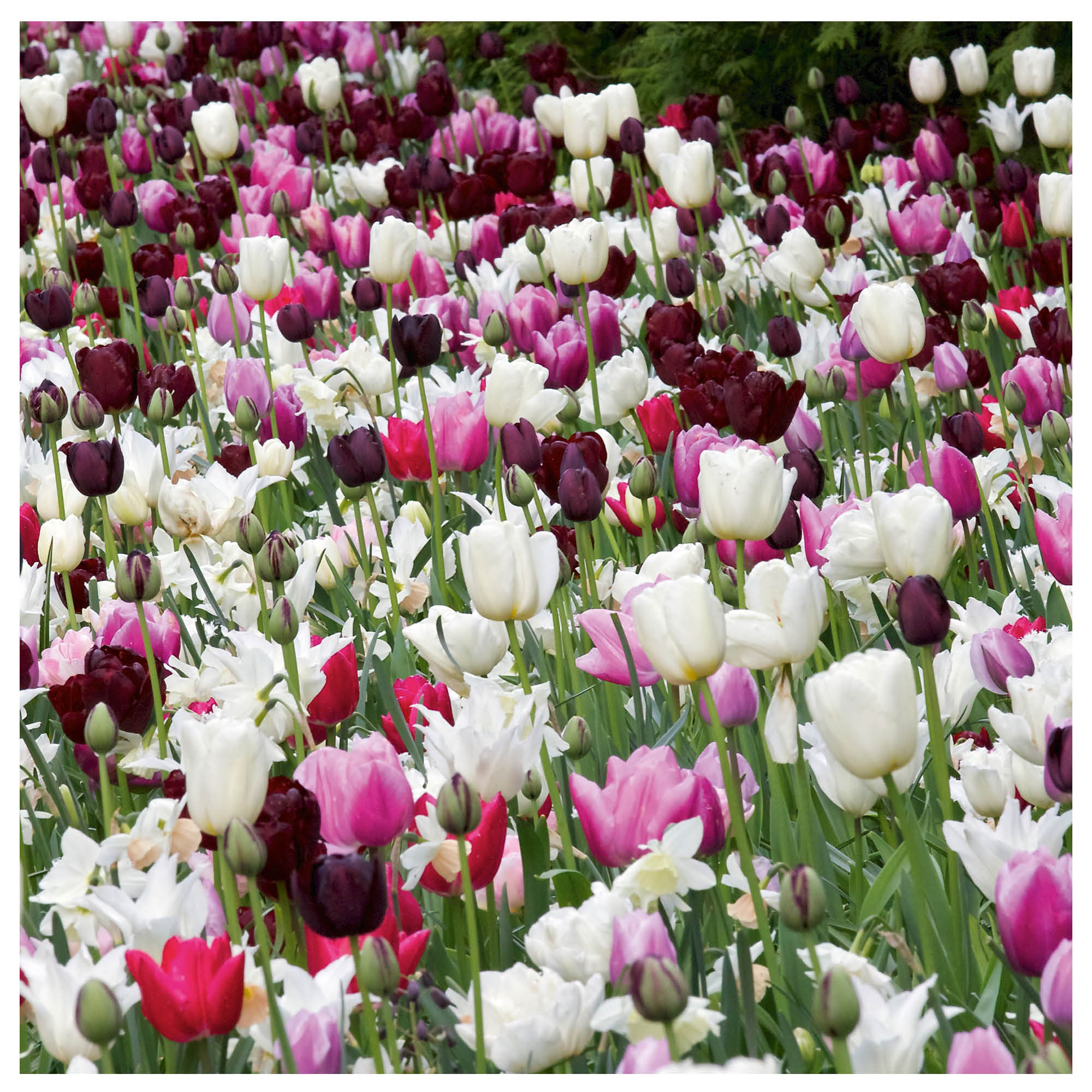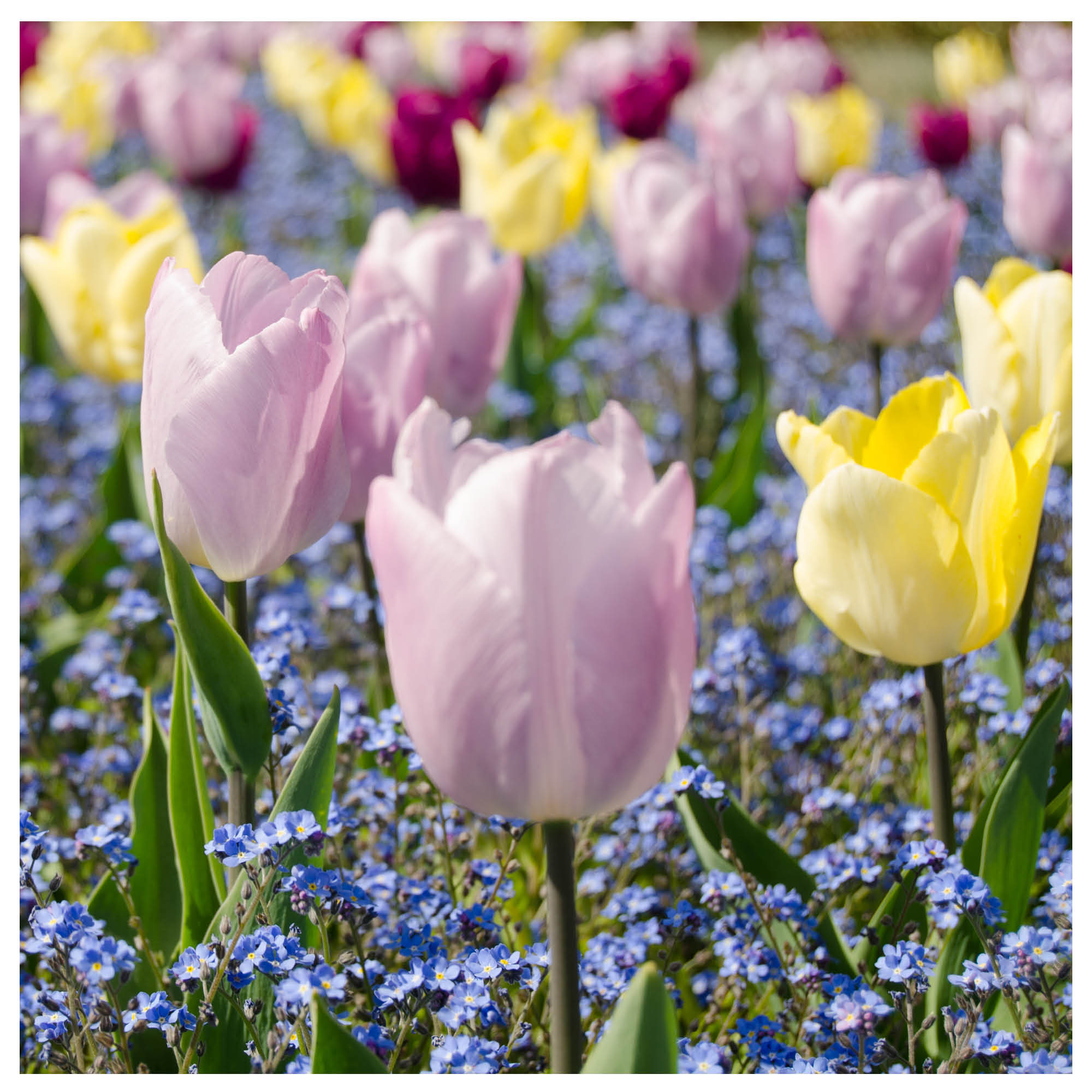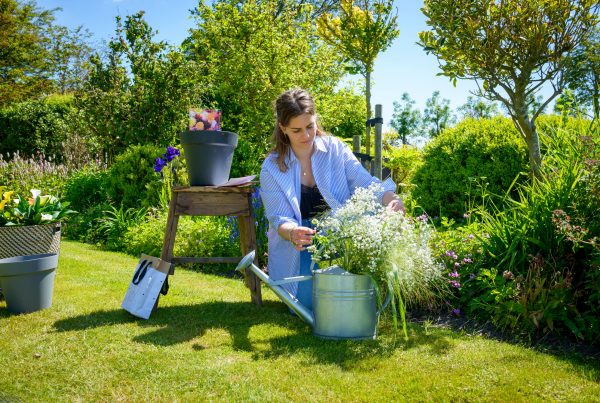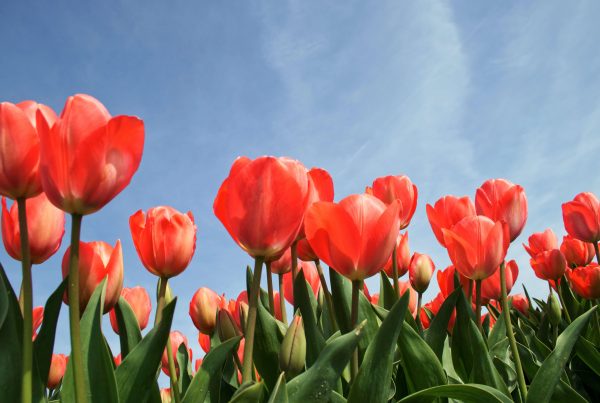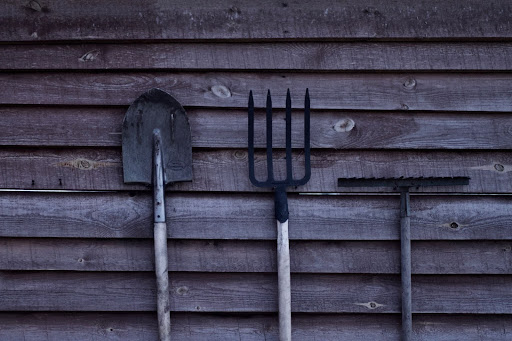The Tulip has to be the world’s most famous flower. This gorgeous flower makes any garden look spectacular. They radiate beauty in both sunny and shady locations. Are you familiar with the many kinds of tulips? And how could you enjoy them in your own garden?
Harbingers of spring
Tulips announce the coming of spring with fireworks of color. These flowers add a wonderful splash of cheerfulness to a garden when the rest of it is still asleep. After all, tulips start flowering as early as March. Their sparkling colors and opening flower buds make the flowering season last longer by starting it earlier. When you say ‘tulips’, you say ‘spring’.
Tulip mania
The story of tulips goes far back in time, to the end of the 16th century. This was when the first Dutch tulip grew and flowered in Leiden. But it wasn’t until a little later, at the beginning of the seventeenth century, that ‘tulip mania’ really erupted. In a very short time, tulip bulbs became highly valuable items. During this tulip craze, a single tulip bulb could be worth as much as an entire canalside property in Amsterdam.
The epicenter
The Netherlands is the epicenter of tulip bulb production. This country exports 2.5 billion tulip bulbs to other countries every year. Forty percent of the tulips produced consist of 23 varieties. These are sold in garden centers or used for flower production. One yellow variety – ‘Strong Gold’ – tops the list. ‘Leen van der Mark’, a red and white tulip, is in second place.
Varieties
Tulips come in almost every imaginable color: yellow, green, red, orange, purple, pink and even varieties with more than one color. The only colors missing are blue and true black. Although some varieties come very close to being black, they are actually a deep purple. Tulips are classified into fifteen groups depending on their flowering period and flower shape:
- Single Early Tulips
- Double Early Tulips
- Triumph Tulips
- Darwin Hybrid Tulips
- Single Late Tulips
- Lily-flowered Tulips
- Fringed Tulips (Orchid Tulips)
- Viridiflora Tulips
- Rembrandt Tulips
- Parrot Tulips
- Double Late Tulips (Peony-flowered Tulips)
- Kaufmanniana Tulips (Waterlily Tulips)
- Fosteriana Tulips
- Greigii Tulips
- Species Tulips (Dwarf Tulips)
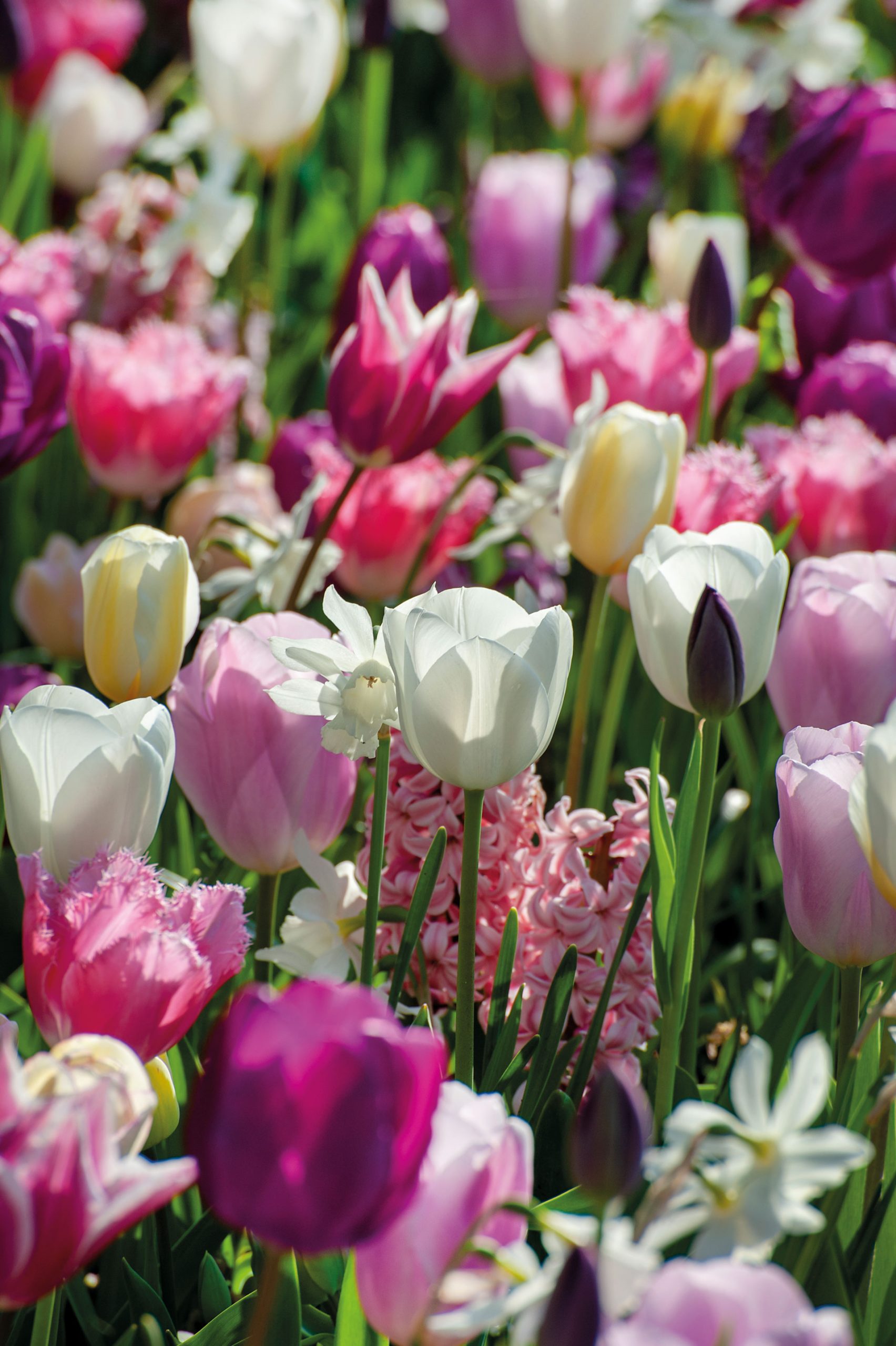
Planting
Tulips should be planted from mid-September until mid-December. Fall is the best time for this since they require a cold period. Make sure, however, to plant them before the soil freezes for the first time. It’s best to plant flower bulbs as soon as possible after you buy them. If you have to store them for a while, keep them in a cool (50 to 60 degrees Fahrenheit) dry place.
- Dig a hole for a group of flower bulbs or make individual holes for planting them one at a time.
- Place the flower bulbs gently into the soil with the point on top. Be careful not to press down too hard on the flower bulbs, because this could damage them. Large flower bulbs should be planted 3 to 8 inches apart and small bulbs 1 to 3 inches apart. Make sure that the bulbs are planted at a depth three times the height of the bulb itself.
- Cover the flower bulbs with the soil dug from the hole.
- If the soil is dry, give the tulips some water.
Pots
If you have a balcony or patio, this is the perfect place to plant some tulip bulbs in pots. It’s important, however, to use pots that are at least six times as tall as the flower bulb itself. This way, there will be a layer of soil both above and under the tulip bulbs which is three times the height of the bulbs. Also, make sure that the pot has a hole at the bottom so that excess water can drain away.
Interesting facts about tulips:
- Despite the many varieties of tulips we have, new ones are constantly being developed. This breeding involves crossing tulips with excellent characteristics to obtain new cultivars. Did you know that it takes 20 years before a new tulip variety will be sold in a garden center?
- Species tulips produce flowers every year and their bulbs will even increase in number. They are also known as dwarf tulips since they are smaller than other tulips.
- There’s a certain tulip that looks like ice cream. As you might guess, its name is: Tulipa ‘Ice Cream’.
More information about flower bulbs is available at www.flowerbulbs.com. Check out our gift set collection of flower bulbs in our shop.
